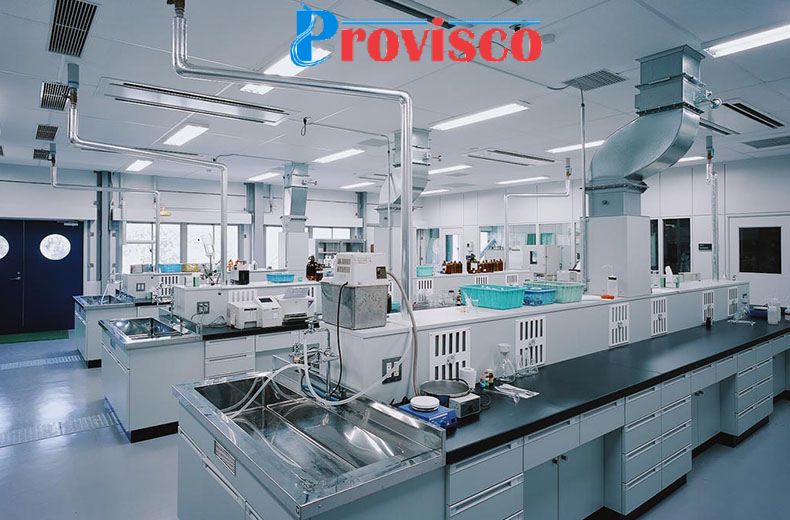Today’s quickly changing scientific environment necessitates furniture for laboratory areas that improves productivity, safety, and overall utility in addition to accommodating a variety of devices. Any well-equipped lab must have a modern laboratory instrument table since it provides crucial characteristics that can really make a difference. In order to satisfy the demands of modern research and experimentation, we will examine ten essential elements that any modern laboratory instrument table should have in this article.
Designing Ergonomically for Comfort and Effectiveness
An ergonomic design is one of the most important characteristics of a contemporary laboratory equipment bench. Adjustable tables encourage comfort and lower the risk of musculoskeletal problems by accommodating a variety of users and tasks. Researchers can work more productively and efficiently for longer periods of time with an ergonomically built table.
Long-lasting Materials for Durability
A laboratory instrument table’s durability is an important factor to take into account. The materials used to build these tables ought to be able to resist the rigors of a laboratory setting. Because they can withstand chemicals, corrosion, and normal wear and tear, stainless steel and chemical-resistant laminates are popular options.
Adaptable Elevations and Movement
A contemporary lab instrument table must to be able to be raised or lowered to accommodate different jobs and investigations. No matter how tall they are or what tools they are employing, researchers can work comfortably because to this versatility. Moreover, tables with casters or wheels are mobile, making it simple to rearrange the lab area.
Management and Organization of Cables
In order to avoid mishaps and keep the workspace tidy, effective cable management is essential in a laboratory. Cable management solutions that arrange power cords, data cables, and other connections neatly and out of the way should be included in a laboratory instrument bench. This promotes a clutter-free atmosphere in addition to increasing safety.
USB Ports and Built-in Power Outlets
Today’s research relies heavily on technology, so having USB ports and power outlets built into the instrument table is rather helpful. Without extension cords or power strips, researchers may easily connect and charge their gadgets, creating a more organized and productive work environment.
Solutions for Convenient Storage
Instrument tables for laboratories that have built-in shelves or drawers provide a practical place to keep commonly used materials and tools. These elements guarantee that necessary supplies are easily available during investigations and aid in maintaining an orderly workspace.
Safety in Chemical Resistance
Given that spills and exposure to corrosive substances are frequent in laboratories, chemical resistance is essential for instrument tables in these settings. To protect researchers and equipment, a contemporary table should be resistant to deterioration when exposed to different chemicals.
Personalization Choices
Every lab has different requirements and tastes. Customization options should be available on a modern laboratory instrument table so that researchers can make the table exactly what they need. Choosing the right size, form, and extra features to fit the lab’s workflow may fall under this category.
Wallet-Friendly Selections
Although expensive laboratory instrument tables come with a lot of features, there are also less expensive options. Even though these tables might only include a portion of the essential features, they are still useful and functional for labs on a tight budget.
Case Study: The Metamorphosis of a Lab
We present a case study of a lab that upgraded its equipment to highlight the benefits of a modern laboratory instrument table. The change not only increased productivity but also improved the atmosphere at work in general.
Tips for Maintaining Laboratory Instrument Tables
Regular maintenance is crucial to the longevity of your laboratory instrument table. For optimum performance, this section offers helpful advice on how to clean, check, and maintain your table.
Improving Lab Security
A laboratory’s safety is its first priority. We examine how the characteristics of a contemporary lab instrument table safeguard researchers and equipment and promote a safer work environment.
Conclusion
In conclusion, a modern piece of lab furniture should be an instrument table that is highly functional, long-lasting, and adaptable. Your laboratory’s productivity, safety, and efficiency can all be greatly increased with the ten essential features we’ve covered in this article. Purchasing the appropriate laboratory instrument table is an essential choice, regardless of whether you’re building a new lab or remodeling your current area.
FAQs
1. Why is ergonomic design important for laboratory instrument tables?
It takes ergonomic design to make users comfortable and productive. It guarantees that researchers can work comfortably for extended periods of time and helps prevent musculoskeletal problems.
2. Is it possible to modify a lab instrument table to meet the specific requirements of my lab?
Yes, a lot of laboratory instrument tables have customization features that let you adjust the size, shape, and other aspects of the table to fit the unique needs of your lab.
3. How can I keep my lab instrument table in good working order?
Regular maintenance entails inspecting, cleaning, and quickly resolving any problems. It guarantees the durability and optimum functionality of your lab instrument table.


